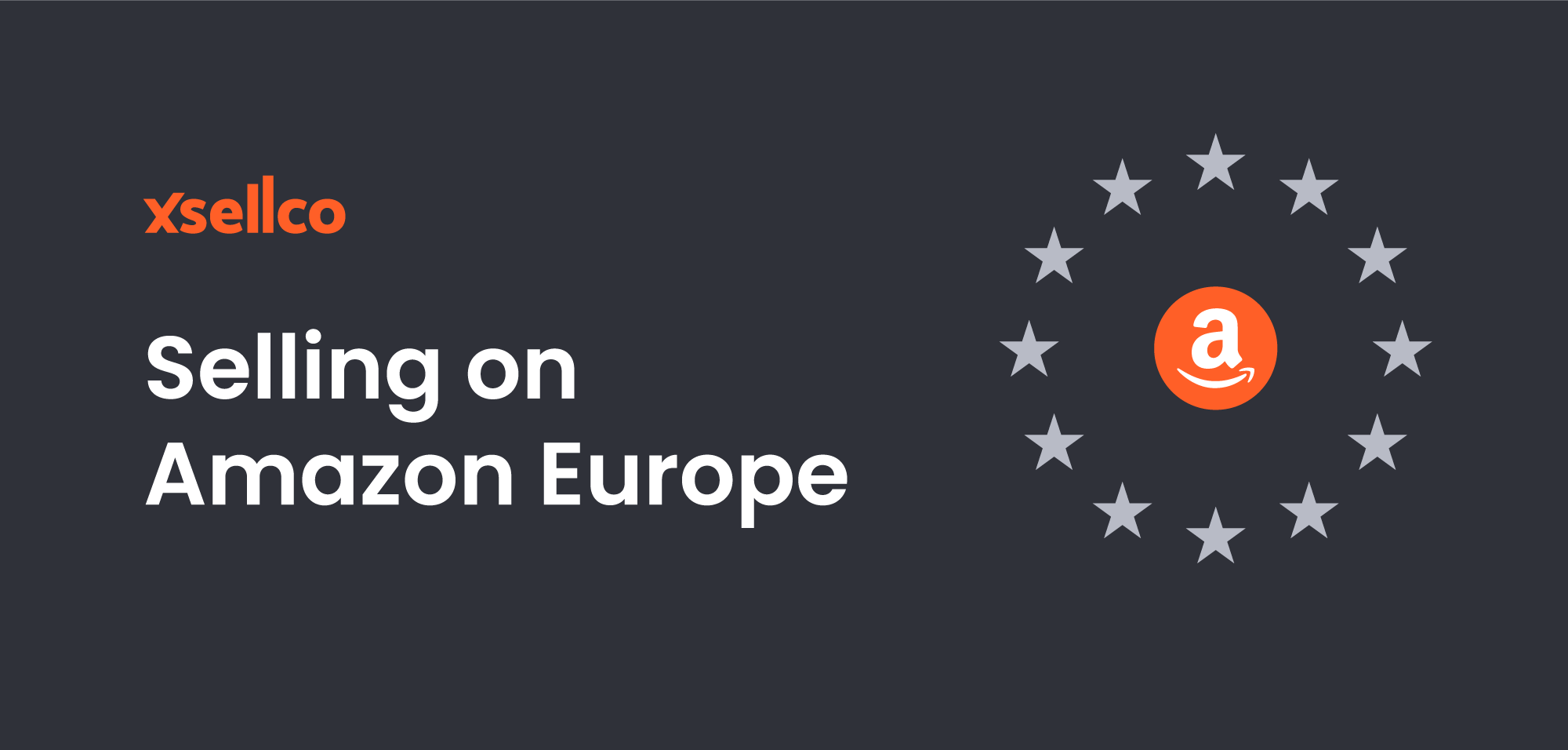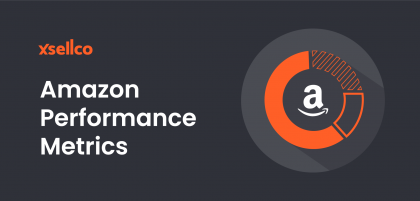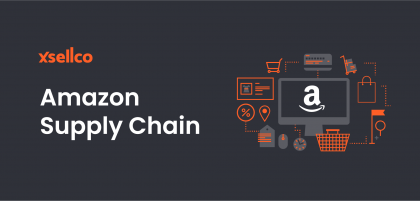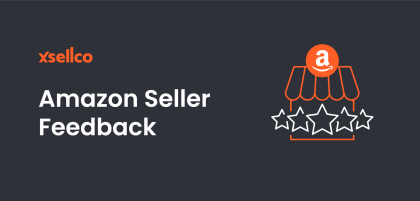Amazon is an ecommerce giant. It’s a platform that offers colossal reach, and importantly, massive potential for UK Amazon sellers to reach a vast audience in Europe by utilising the opportunity to sell across six countries. Selling on Amazon Europe is big business.
Yet many UK Amazon sellers only sell on just one of the six European marketplaces, namely Amazon UK, and are hesitant to expand their reach into other countries.
Perhaps you are one of those sellers?
Are you of the opinion that legalities, language barriers, currency issues and differing marketplace rules and regulations make selling internationally too challenging?
If so, you are not alone. Plenty of UK Amazon sellers are not currently taking advantage of selling on Amazon Europe. However, by only selling in the UK and ignoring the other five Amazon marketplaces you are missing out on sales and are not allowing your business to grow as successfully as it could.
The Benefits of Selling on Amazon Europe
The biggest plus of selling on Amazon Europe is the potential audience you gain access to. Besides the UK, you get immediate access to five other lucrative marketplaces:
- Germany (Population: 83 million people)
- France (Population: 65 million people)
- Spain (Population: 46 million people)
- Italy (Population: 60 million people)
- Netherlands (Population: 17 million people)
That’s a potential ready-made audience of close to 271 million! Add to this your current UK audience of 68 million, and that makes a grand total of 339 million potential customers (plus all those other people who don’t reside in any of those countries but will order from Amazon anyway).
You could reach all of these people – your potential customers – just by expanding and selling on Amazon Europe.
Secondly, Amazon is still expanding into Europe, investing millions into the streamlining and setting up of brand new FBA (Fulfilment by Amazon) locations to make selling on Amazon even more straightforward.
Without a doubt, your Amazon business can benefit by expanding internationally. But, there is understandably some apprehension. It’s daunting taking the leap into unknown territory after all.
The fear comes for most Amazon sellers when you start looking into selling on Amazon Europe, and you discover there is more than one way to do so, and all of these options, at first glance, appear complicated.
3 Ways to Sell on Amazon Europe
1. Pan-European Amazon FBA
When you open a Pan-European Amazon account, you will send all your stock to a central EU fulfilment centre. Amazon will then distribute your inventory to other fulfilment centres depending on where your stock is selling and in what quantities. So, this is a good option if you are unsure where to distribute your stock as you don’t know which market is best for your products.
However, in this case, you will need to register for a VAT number in each of the countries you wish to sell plus an EORI (Economic Operators Registration and Identification) number to be able to import into Europe (if you are not using FBA).
Initially, your UK VAT number will suffice, but if you intend to expand further in Europe, eventually you will need additional VAT numbers if you sell above the tax threshold of each country.
Advantages of Pan-European Amazon FBA
- Low shipping costs
- No cross-border fees
- Fast delivery times within all marketplaces
- Eligible for Amazon Prime
Disadvantages of Pan-European FBA
- VAT registration required in multiple countries
- Referral and FBA fees differ in each country
2. Multi-Country Inventory (MCI)
This method is similar to the Pan-European process. This is the FBA fulfilment method that gives you some control over the location of your inventory. You will have the option to decide which Amazon FBA marketplace you want your inventory to be sent to.
For example, if your main marketplace is Amazon UK and your other most lucrative marketplace is Germany, you can choose a percentage of your stock to be sent to a German FBA warehouse and the rest will remain in the UK.
Note: Since March 2020, it has been compulsory for all European Amazon sellers to apply for a German VAT number.
Advantages of MCI
- Low shipping costs
- Full control of stock location
- No cross border fees
- Eligible for Prime delivery
Disadvantages of MCI
- High shipping costs to each FBA centre
- VAT registration required in multiple countries
- Inconsistent FBA fees
3. European Fulfilment Network (EFN)
This is by far the easiest option and entry route into selling on Amazon Europe. With this method you will store all your stock in one EU location and use Amazon FBA to sell across all six European marketplaces, so you will only need to register for VAT and get an EORI number once.
Amazon’s Seller Central lets you access and manage your products on all your marketplaces from one single dashboard. Although this is the easiest method, you should be aware that it could, in some circumstances, involve longer shipping times.
Advantages of EFN
- Offer products in all six Amazon Europe marketplaces
- Only one Amazon account required
- Manage stock across all European marketplaces
- Keep track of orders on all European marketplaces
- Use FBA to serve customers through EFN
- Pay a single monthly Pro Merchant subscription fee
- Share account information through a single dashboard
- View Seller Central pages in English for Amazon Germany, Amazon France, Amazon Italy and Amazon Spain
Disadvantages of EFN
- Cross-border fees payable
- VAT registration required
- Prime products can take an extra three days to be delivered when sold to buyers in countries where your stock is stored
So, there are three different ways to get your foot in the door across Europe. Now all you need is the step-by =-step process which will enable you to quickly ramp up your international Amazon business, develop your brand, make more sales and become more profitable.
Still daunted? Here’s everything you need to know to make the best move for your Amazon business.
7 Steps to Start Selling on Amazon Europe Today
1. Choose your Amazon ‘Home’ Marketplace
You are probably already selling on Amazon UK so that should be your main ‘home’ marketplace from which you reach Amazon’s European marketplaces. Remember, there are five others – Germany, France, Italy, Spain and the Netherlands. You don’t have to sell in all six European marketplaces if you don’t want to, but if you choose the European Fulfilment Network route then you should. Otherwise, you can simply select the most lucrative.
Top Tip: Germany is an excellent bet as it has the largest European marketplace but is less competitive. With almost 500 million monthly site visits, Amazon.de accounts for roughly 41% of Amazon’s total revenue in Europe.
2. Choose your Fulfilment Method
Quite honestly when it comes to a choice between FBA (Fulfilment by Amazon) and FBM (Fulfilment by Merchant), there is no contest. Are you really going to fulfil orders across Europe yourself? Probably not. Apart from it being time-consuming, the logistics involved could see you becoming quite frustrated.
Using FBA when selling on Amazon Europe will also ensure that your customer service is dealt with in the language of the marketplace. So, FBA wins hands down. Amazon will fulfil all your orders for you and deal with your returns, refunds and customer service. It’s a win-win.
Top Tip: Using Amazon’s FBA service will not only assist you with the logistics of selling on Amazon Europe, but will also ensure your continued credibility with your new international customers.
3. Know your Legal Obligations
Depending on the product you are selling on Amazon Europe, you will need to investigate the legalities of selling your product in the European marketplace.
For example:
- Consumer Rights
- Returns Regulations
- Health & Safety
- Environmental Standards
- Intellectual Property Law
- Labelling and Packaging Regulations
Top Tip: If you are not legally inclined, you should speak to an international lawyer who will be able to help you ensure you stay legal in every European country you sell in. They will also be able to advise you about VAT.
4. Register for a VAT Number and EORI Number
You will need an EORI number to move your stock between the UK and Europe. If you don’t have one, you may encounter delays and extra costs if HMRC cannot clear your goods. You can apply for an EORI number online through the UK Government website, and it will be sent to you within one week.
Speak to an accountant about registering for a VAT number or register online on the UK Government website.
Top Tip: Make this one of the priority steps you complete when you make the decision to sell on Amazon Europe. While an EORI can be generated in just a few days, it may take up to 30 days for your VAT registration to be processed.
Related: Best Tax Software for Amazon Sellers
5. Translate your Product Listings
This is super important. Poor translations will impact your conversions. You’ll also look unprofessional to customers, so high-quality translations are essential.
Don’t think you can just rely on Google Translate, it will not work out well. Instead, commission your product listings to be professionally translated by a human, not a robot. Use a reputable service such as One Hour Translation or research and outsource the task to a freelancer on Upwork.
Your final translation will make all the difference to your sales conversions – so don’t scrimp on this step.
Top Tip: If you decide to use a freelancer, don’t choose the cheapest translator. Ideally, your chosen translator should have experience in translating listings specifically for Amazon.
6. Localise your Listings
Be aware that the packaging and labels on your products will need to be in the local language of the marketplace in which you are selling, and this is likely to be a legal requirement.
When listing your products, don’t forget that the metric system is standard in the EU, so you’ll need to quote centimetres not inches when listing the dimensions of your product.
You should also bear in mind the fluctuating conversion rate between the pound and euro because this will affect your price point.
Top Tip: Make sure you place your product in the correct category when selling on Amazon Europe. Categories may vary between countries and product names may also differ. For example, ‘pants’ can be underwear or ‘trousers’ depending on the country. The last thing you want to do is confuse your potential customers.
7. List Your Products
As with the UK marketplace, to be successful, your products must be visible in the search results. There may be language variations between countries so you might need to tweak your title keywords, bullet-point information, and main description wording to suit the marketplace.
This may appear time-consuming, but if you don’t use the correct phraseology, you won’t be able to maximise the reach to your audience.
Check out this Amazon listing optimization guide.
Top Tip: Researching products similar to yours currently listed on Amazon European marketplaces is vital. Do this task before you pass your product listing to your translator. This way, you can supply alternative keywords and ensure your product listings are optimised for the new marketplace.
Final Thoughts
There are, without a doubt, some considerable upsides to selling on Amazon Europe once you have overcome the fear factor. Amazon continues to invest in Europe and is growing year-on-year with no sign of a slowdown.
Don’t let potential language barriers and the thought of wading through legislation and law issues stop you from expanding and becoming more profitable. Amazon EFN, combined with FBA, is the least complicated way to start selling on Amazon Europe.
Thousands of online retailers rely on xSellco’s ecommerce customer service helpdesk, intelligent feedback software and instant multichannel repricer.








